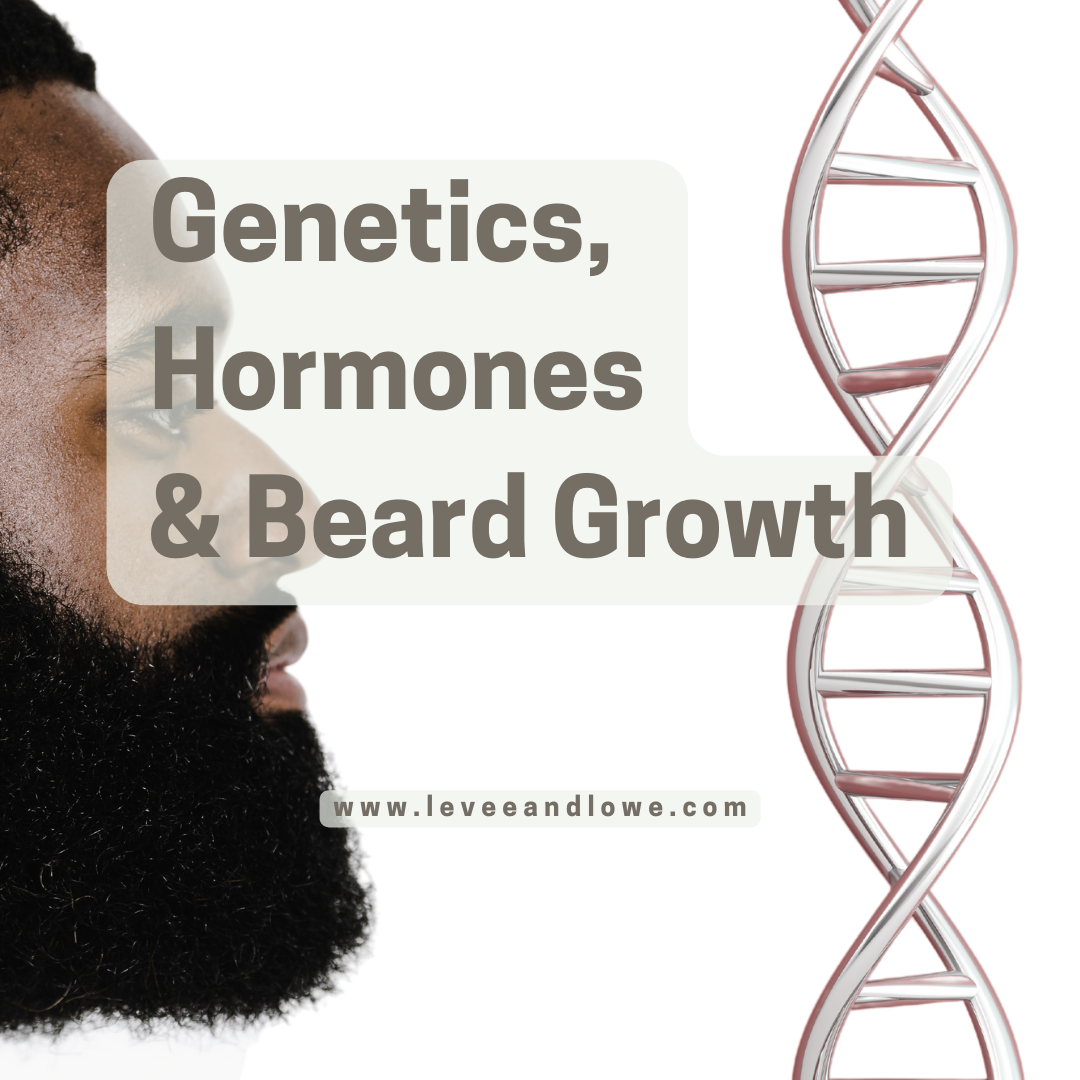Testosterone
The hormone Testosterone is found in humans and other animals that is primarily produced in the testicles and ovaries. Testosterone levels can vary from person to person. Standard testosterone range produced by the testes in adults, is between 280 and 1,100 nanograms per deciliter (ng/dL). Standard testosterone range produced by the ovaries in adults, is between 15 and 70 ng/dL.
We have two types of hair on our body, terminal (hair that we are born able to see, i.e., eyebrows, scalp hair) and vellus (sometimes known as “peach fuzz”) hair. When Testosterone and DHT bind to the androgen receptors on your hair follicles, they promote vellus hairs to be replaced by coarser, darker terminal hair, such as your facial hair. The sensitivity of your androgen receptors on your hair follicles can also plays a vital role in beard growth.
DHT is a by-product of testosterone. It contributes to increased body hair due to it being more potent than testosterone, muscle mass and changes in how adipose (fat) tissue is stored around your body. About 5-10% of testosterone in all people is transformed to DHT with the help of an enzyme called 5-alpha reductase. That leaves a whole lot of testosterone to do what it does best – help you build muscle, improve your mood, give you stronger bones and a help you have great sex.
But what does DHT actually do? DHT works differently on your scalp and facial hair. It suffocates your scalp hair follicles so they can’t product hair (that’s not what we want!), but there is some evidence to suggest that DHT influences linear beard growth, which means how fast your beard grows.
Now we know how genetics and hormones influence beard growth.
Choose The Right Products for your Beard
Choosing the right products for hair growth can be overwhelming, so we’ve simplified it for you. We've developed a range of uniquely crafted Beard Oils, Beard Balms and Solid Shampoo Bars contain the right oils, vitamins and nutrients need to provide the hair follicles an optimal environment for growth and balance. The result is all-day softness, incredibly lightweight and long-lasting beard care and growth promoting products.
Incorporate Testosterone Boosting Foods into your Diet
Takeaway
It's well known that the rate at which your facial hair will grow in, as well as its fullness, is largely determined by genetics. Specially, testosterone and it's by-product, DHT. Since beard growth is largely determined by genetics, it doesn't mean you don't need to maintain good facial hair and skin hygiene. Hair can grow at different rates and variations for everyone, so you don't know when your beard may grow in. Read through our other educational blogs about hair growth, beard oil benefits, and keeping yourself healthy through diet and exercise to help boost your overall testosterone.

Disclaimer: This blog is solely intended for the educational/informational/awareness purposes and is not a substitute for any medical advice, diagnosis, or treatment. Please consult your doctor/healthcare professional before acting on the information provided on this blog. Reliance on any or all the information provided in the blog, is solely at your own risk and responsibility. Levee + Lowe™ shall not be held liable, in any circumstances.
Language Disclaimer: It has been established that sex and gender exist on a spectrum, the studies in our research did not report data on, or include, participants who are transgender, nonbinary, gender-queer, agender, or genderless. To maintain the specificity and accuracy of the research, this blog will use the terms “male” and “men” as stated in the research
References
Adhikari, K., Fontanil, T., Cal, S., Mendoza-Revilla, J., Fuentes-Guajardo, M., Chacón-Duque, J. C., Al-Saadi, F., Johansson, J. A., Quinto-Sanchez, M., Acuña-Alonzo, V., Jaramillo, C., Arias, W., Barquera Lozano, R., Macín Pérez, G., Gómez-Valdés, J., Villamil-Ramírez, H., Hunemeier, T., Ramallo, V., Silva de Cerqueira, C. C., Hurtado, M., … Ruiz-Linares, A. (2016). A genome-wide association scan in admixed Latin Americans identifies loci influencing facial and scalp hair features. Nature communications, 7, 10815. https://doi.org/10.1038/ncomms10815
Farthing, M. J., Mattei, A. M., Edwards, C. R., & Dawson, A. M. (1982). Relationship between plasma testosterone and dihydrotestosterone concentrations and male facial hair growth. The British journal of dermatology, 107(5), 559–564. https://doi.org/10.1111/j.1365-2133.1982.tb00406.x
Miranda, B. H., Charlesworth, M. R., Tobin, D. J., Sharpe, D. T., & Randall, V. A. (2018). Androgens trigger different growth responses in genetically iodentical human hair follicles in organ culture that reflect their epigenetic diversity in life. The Journal of the Federation of American Societies for Experimental Biology, 32(2), 795-806. doi:10.1096/fj.201700260RR
Swerdloff, Dudley, R. E., Page, S. T., Wang, C., & Salameh, W. A. (2017). Dihydrotestosterone: Biochemistry, Physiology, and Clinical Implications of Elevated Blood Levels. Endocrine Reviews, 38(3), 220–254. https://doi.org/10.1210/er.2016-1067
Thornton, J. M., Hamada, K., Randall, V.A., & Messenger, A. G. (1998). Androgen-Dependent Beard Dermal Papilla Cells Secrete Autocrine Growth factors(s) in Response to Testosterone Unlike Scalp Cells. Journal of Investigative Dermatology, 111(5), 727-732. doi:https://doi.org/10.1046/j.1523-1747.1998.00396.x
